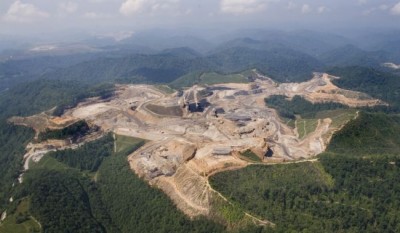 The First Lady helps create the world’s most famous kitchen garden. When my info-larder gets too packed, it’s time to serve up some choice nuggets from around the Web.
The First Lady helps create the world’s most famous kitchen garden. When my info-larder gets too packed, it’s time to serve up some choice nuggets from around the Web.
A high-profile urban garden, two writers, and some vile sludge
Andrew Kimbrell of the Center for Food Safety is one of our most important critics of industrial agriculture. (Here’s a brief video interview with him I did last fall.) Eddie Gehman Kohan of Obama Foodorama is quickly establishing herself as an important food-politics blogger–deceptively serious despite her blog’s sometimes-frivolous obsession with all intersections of food and the Obamas. Both are fervent supporters of chemical-free, ecologically responsible agriculture.
The two have crossed forks, so to speak, over the White House veggie garden–specifically the revelation that the Clintons fertilized the lawn with sewage sludge in the ’90s, leaving traces of lead in the soil. Kimbrell weighed in in a HuffPo piece last week, concluding that: “in the best spirit of NIMBY, the Obamas, after removing that contaminated soil from their lawn, should be the first family to push the EPA to halt the sludging of our public lands and farmlands.”
Gehman Kohan quickly rose to the garden’s defense, declaring Kimbrell’s contamination claim “irresponsible” and the garden’s lead reading “ridiculously low.” She concluded:
No one is being poisoned by eating the bounty of wonderful crops that have been grown in the White House Kitchen Garden, and it’s become a source of inspiration for people all over America and around the world.
Now Kimbrell has fired back, lecturing that Gehman Kohan should “acquaint herself with the real facts about the levels of heavy metals, priority pollutants and the myriad other toxins in sludge. There is ample evidence that coming into contact with or unknowingly consuming it can cause severe illness and worse.”
My take: the White House should use the episode as a teachable moment on the hazards of applying sewage sludge as a fertilizer–recently documented in a Grist piece by Catharine Price. “There are pathogens,” Price wrote; “there are heavy metals. PCBs, dioxins, DDT, asbestos, polio, parasitic worms, radioactive material–all have been found in sludge.”
As Kimbrell demonstrates, the Clinton and Bush administrations cravenly coddled the sludge industry even as it became clear its product was toxic; half of all U.S. sludge is applied to land as fertilizer.
Obama should convene non-industry-related public health experts to examine the garden soil and decide if it presents a menace. If it does, the soil should be replaced with compost as Kimbrell suggests (perhaps with the Clintons themselves pitiching in shovel-work). If it doesn’t present a threat–and it may well not, since the nasty stuff was applied back in the ’90s–then the garden shold go on as normal. Either way, consumers will have been educated about the vile practice of spreading toxic sludge on farmland–which Obama’s EPA will soon end, I hope. They’ll also have seen seen the precautionary principle–widely scorned during the Clinton and bush years–get some respect.
Human, all-too human
For a way that human waste actually could be turned into a valuable fertilizer, see this funny LA Times piece on one writer’s path to a composting toilet. “I’m single, dating and a mom,” writes Susan Carpenter. “Much as I liked the idea of saving water and detouring sewage, I couldn’t replace the one toilet I had with something so. . . .Berkeley.” Turns out the (so-L.A.) Carpenter could start using her composting toilet–once she realized just how dire California’s water situation is. Now she’s even fertilizing her lemon tree with the resulting compost!
Paging Barry and Michelle–are ya’ll ready for the cutting edge of “going green”?
Tater tots, the vegetable
From the Columbus Dispatch, a refreshingly blunt take on school lunches for mainstream readders. Reporter Jennifer Smith Richards:
Most school food comes frozen. It is usually not whole-grain, low-fat or low-sodium. And it is cheap because school districts need it to be: On average, local districts spend less than $1.50 per lunch to buy the food.
And later:
On a Friday last school year, Columbus’ elementary-school students were offered a grilled-cheese sandwich that cost the district 42 cents, an 11-cent bag of pretzels, some canned fruit, juice and milk. The whole lunch, the cheapest of February, cost the district barely more than $1. The full price for students: $1.75.
For that month, students were offered vegetables other than potatoes three times — raw carrots with ranch dressing twice and mixed vegetables once. Similar menus were offered all year.
Se goes on to write that “Cheetos Cracker Trax and pretzels can be counted as grains and tater tots as vegetables”; and describes a prefab “cheese-filled breadstick, served with a side of marinara sauce” that “counts for a bread, cheese and vegetable” under USDA food-group rules. Yikes. The brutalization of the American palate–its conditioning to crave processed food–starts young.
Winter veggies–in northern Minnesota!
One of the conventional knocks on reviving local and regional food systems goes like this: Eating local is fine and well, but here in [insert northern area with short growing season] I’d get tired of eating elk meat and snow all winter.
My answer has always been: appropriate technology and infrastructure investment can dramatically extend growing seasons in almost any climate. This fine article in the Willmar, Minn. West Central Tribune illustrates that point nicely. It focuses on the founders of a winter CSA in Milan, Minnesota, whose winter weather will never be confused with that of, say, Yuma, Arizona, source of the bulk of U.S. winter veggies.
Using 1970s technology and cheap materials, Carol Ford and Chuck Waibel, founders and owners of Garden Goddess Enterprises produced a variety of vegetables throughout the winter for 18 families, running up a propane bill of $75.



